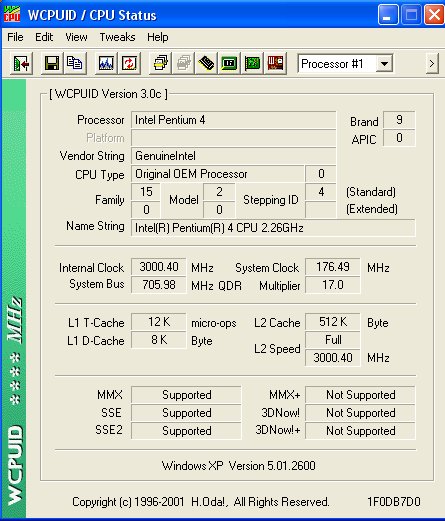Overclocking, stability and compatibility
|
It's always interesting to see how far you can take components before they fail. One sign of well engineered products is the ability to comfortably surpass their rated specifications with ease. The Intel i845D-based motherboards repeatedly showed their overclocking prowess. The move from i845D to i845E was a relatively simple affair with respect to the increased 133FSB, as every i845D motherboard I've previously tested could run at 150FSB without any difficulty. ABIT, with their PCI locking facility, allowed one to go as far as the CPU or motherboard would allow without compromising PCI bus speeds. My recently acquired 2.26GHz P4 Northwood 'B' was a prime candidate in attempting to find the FSB limit of motherboards due to its relatively low 17x multiplier. I cranked up the voltage to the maximum 1.725v on offer and began raising the FSB whilst keeping the PCI bus locked. Here is what I got up to:
The magical 3GHz barrier was broken with quiet air-cooling and 1.725v on offer. The 176+ FSB is pleasing from a motherboard point of view. Even though the northbridge was only cooled by a passive fan, I could run a few benchmarks at this speed. My main enemy was the heat produced from such a high clock speed. I'm sure that better cooling on the CPU would have given me stability at this speed. The northbridge temperature was reported as being at 60c. Overclocking counts for nothing if you can't attain basic stability at any given speed. I only judge stability when the motherboard is running with aggressive settings. I'm pleased to report that I experienced no untoward incidents in over 20-hours of full CPU load. Compatibility is an important issue, too. The only real problem I ran into was running at an increased FSB speed when all three DIMM slots were populated. The nature of the i845E chipset dictates that if all three DIMM slots are to be run concurrently, two of the memory modules must be single-sided. Other than that, switching between 1.5v graphics cards and various PCI cards caused no problems at all.
|










